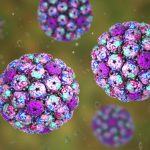Earlier this year, baseball Hall of Famer Tony Gwynn died of salivary cancer at age 54, something he had attributed to his use of smokeless tobacco. Now another well-known former professional baseball player is coming forward to talk about his cancer and longtime use of chewing tobacco.
On Wednesday, former Red Sox pitcher Curt Schilling said he was diagnosed earlier this year with squamous cell carcinoma, or cancer of the mouth. Schilling said the cancer was caught early, thanks to a lump in his throat, and that he has no doubt chewing tobacco played a role in his diagnosis.
Umamaheswar Duvvuri, M.D., Ph.D., a surgeon who specializes in the diagnosis and minimally invasive surgical treatment of head and neck cancers, answers some common questions below about the link between head and neck cancer and smokeless tobacco.
Q. What is head and neck cancer?
A. Head and neck cancer is a general term that refers to malignancies/cancer that start in the region of the head and neck, but excluding the eyes and brain.
There are several types of cancers that can start in these regions, but about 85 percent are derived from the cells that line our upper aerodigestive tract. These are called squamous cell carcinomas, and are generally associated with smoking and drinking.
Q. How is head and neck cancer commonly treated?
A. Squamous cell cancer of the head and neck is generally treated with surgery, radiation therapy and/or chemotherapy. These modalities are used either alone or in combination with each other depending on where the cancer is located – mouth, throat, voice box, etc. – and also based on the stage of the tumor.
Q. Is there a proven link between head and neck cancers and the use of smokeless tobacco?
A. There is definite evidence that the use of tobacco, including smokeless tobacco, increases the chances of developing head and neck cancer. In particular, smokeless tobacco use is associated with development of oral cancer, which includes tongue cancer, cancer arising in the inside of the cheek and the jaw.
Q. What are the symptoms of head and neck cancers?
A. The head and neck region houses a lot of structures including nerves and lymph nodes. Involvement of these structures by cancer leads to the symptoms that often cause patients to seek medical care. Specifically, patients often complain of ear pain, mouth pain, ill-fitting dentures or difficult or painful swallowing. These painful symptoms occur because the cancer has started to involve nerves in the head and neck region.
If cancer spreads to lymph nodes in the neck, the lymph node(s) can enlarge leading to a palpable lump in the neck. These lumps tend to occur under the jaw bone and just next to the large muscle that turns our head, called the SCM (sternocleidomastoid) muscle.
If a patient has any of these symptoms he/she should seek immediate medical advice from a trained ear, nose and throat specialist.










